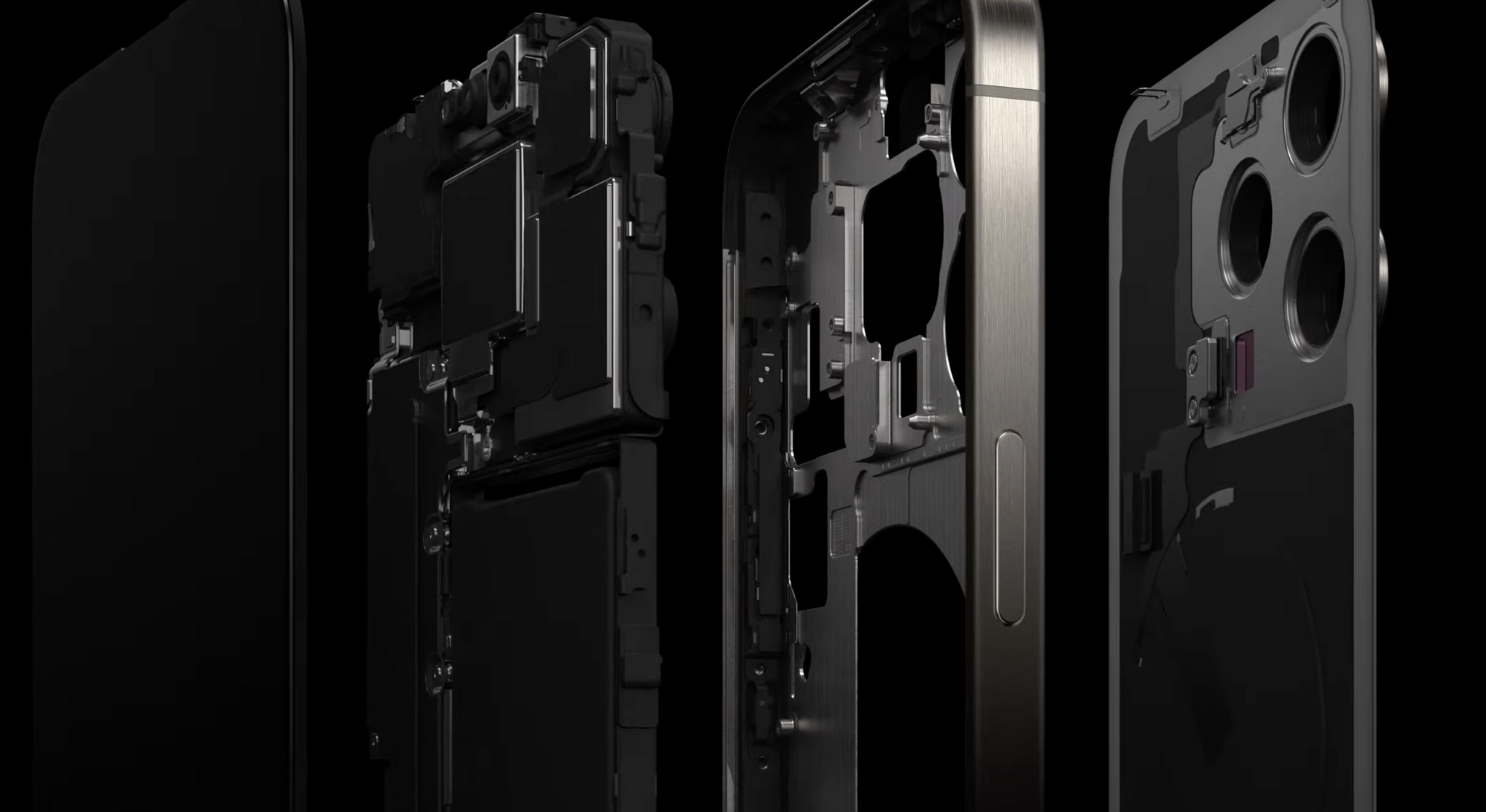Apple executives talked about designing the iPhone 15 Pro for repairability, the first time that repair has ever been mentioned at an iPhone release keynote.
While discussing various marketing terms such as the “nanocoatings” on the new titanium alloy design of the iPhone 15 Pro and iPhone 15 Pro Max, Isabel Yang, a materials science engineer at Apple, said “there is also a new internal chassis architecture that makes iPhone more repairable, thanks to a new structural frame that allows the back glass to be easily replaced.”
This single sentence in an 85-minute-long ode to consumerism and new gadgets may not be much, but it is actually notable. During the keynote, I searched the transcripts of 15 years-worth of new iPhone announcements. The word “repair” had not been uttered until today, from what I can tell from my transcript searches, though Apple has talked a lot about carbon emissions, recycling, material design, etc., while fundamentally selling consumers annual, semi-disposable gadgets that have a huge impact on the environment.
This tweak for the iPhone 15 Pro mirrors a change that was made on the normal iPhone 14 last year (but was not on the iPhone 14 Pro), which allows the phone to be opened from the front or the back. Repairing the back glass on previous versions of iPhones was a nightmare on previous models, as I, who owns an iPhone 11 Pro with an extremely busted back, can attest.
iFixit called the removable back glass a “secret iPhone 14 redesign,” and added that “Apple has completely redesigned the internals of the iPhone 14 to make it easier to repair. It is not visible from the outside, but this is a big deal. It’s the most significant design change to the iPhone in a long time.”
Elizabeth Chamberlain, director of sustainability at iFixit, told me in an online chat that “it’s great to see it [the new architecture] through the whole product line.” But both Chamberlain and iFixit’s Matt Zieminski added that the most sustainable iPhone is the one that you don’t buy: “They touted the whole Carbon Neutral thing,” Zieminski said. “You know what’s even more carbon neutral? Not buying a new thing every year.”
"The conversation around repairability is more nuanced than ever. While Apple's acknowledgment is a step forward, it also opens up more questions about the sincerity and extent of corporate commitments to repairability and sustainability. On one hand, Apple touts its commitment to the environment through various initiatives and now, by mentioning 'repairability,'" Zieminski said. "On the other, its past and current actions, such as parts pairing and software locks, often contradict this eco-friendly persona. Apple's brand is influential. If they claim to be making strides in repairability, many consumers may take this at face value without digging deeper. This could inadvertently perpetuate a false narrative about the true environmental impact of Apple's products. In a market where consumers are increasingly valuing sustainability, claims of repairability could give Apple a competitive edge, even if these claims are more cosmetic than substantive, and I'm not sure if there's a way to police that effectively."
Nathan Proctor, director of consumer rights group US PIRG’s right to repair campaign, said he was happy Apple mentioned repair but is holding judgment until the new model is actually released: “I care that the phone is more repairable—that’s the goal of our campaign,” he said. “While I certainly don’t mind if repair gets a mention, I am waiting for the teardown, especially to see how Apple is addressing complaints about parts pairing and other barriers to repair.”
For anyone curious, here are 14 years worth of iPhone announcements.


